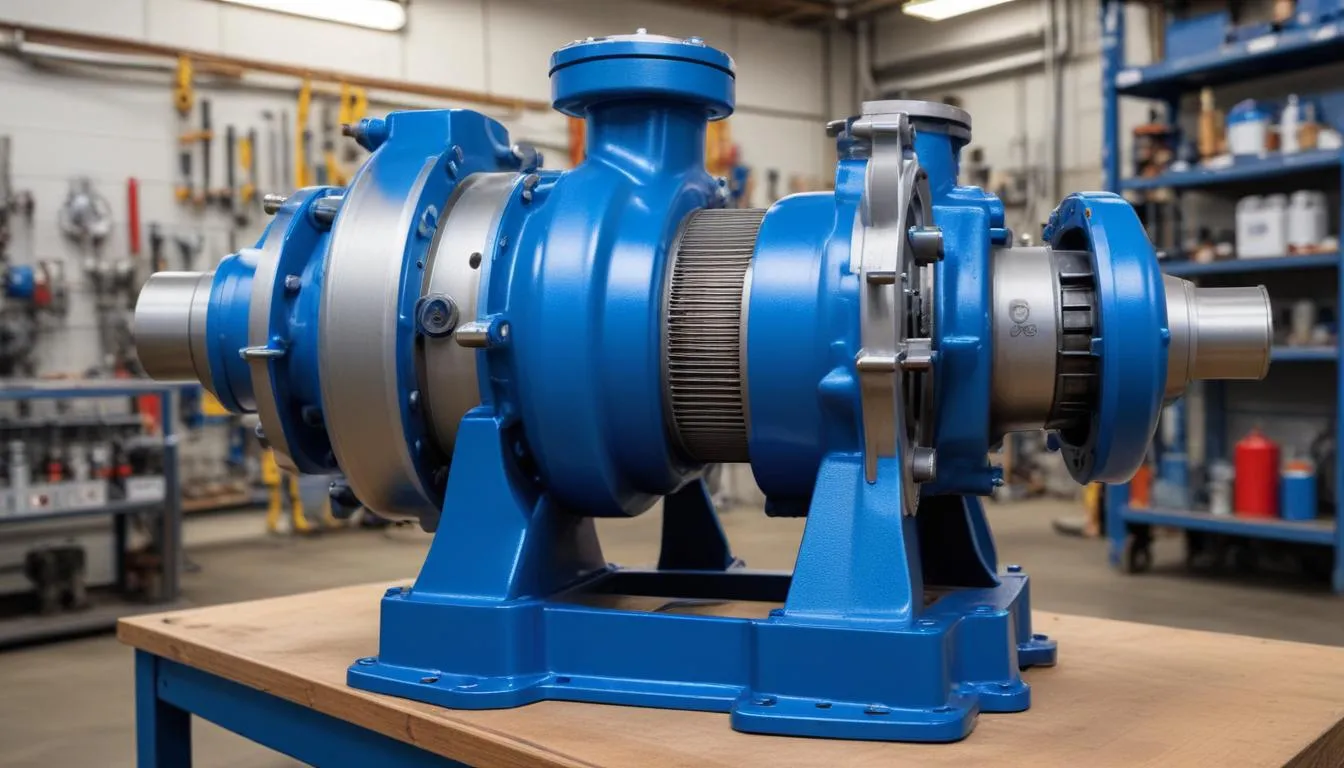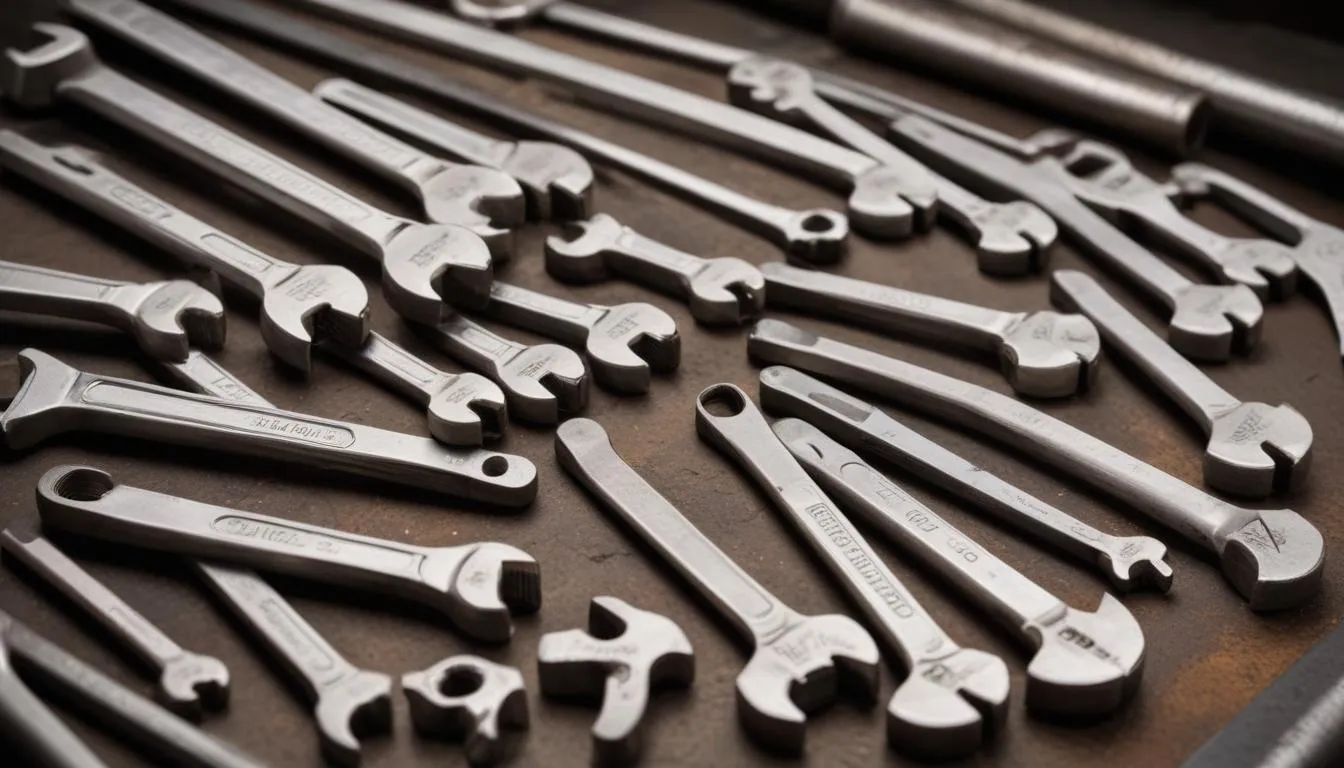 Industrial pumps play a critical role in various sectors, including manufacturing, oil and gas, and water treatment. Understanding the different types of industrial pumps is essential for effective maintenance and pump refurbishment, ultimately leading to more efficient operations and cost-saving measures.
Industrial pumps play a critical role in various sectors, including manufacturing, oil and gas, and water treatment. Understanding the different types of industrial pumps is essential for effective maintenance and pump refurbishment, ultimately leading to more efficient operations and cost-saving measures.
- Centrifugal Pumps: These pumps utilize a rotating impeller to increase fluid velocity and pressure. They are typically used for transporting liquids in a continuous flow and are favored for their simple design and ease of maintenance.
- Positive Displacement Pumps: Unlike centrifugal pumps, these pumps move fluid by trapping a fixed amount of liquid and forcing it through the discharge. They are ideal for applications requiring high viscosity or specific flow rates.
- Submersible Pumps: Designed to operate while submerged in fluid, these pumps are crucial for applications involving wells or sewage systems. Their design allows them to handle submerged conditions effectively.
- Diaphragm Pumps: Utilizing a diaphragm to create a pumping action, these pumps are known for their ability to handle slurries and corrosive fluids. They are commonly used in chemical processing and industries that deal with hazardous materials.
- Gear Pumps: These pumps move fluids through the meshing of gears, providing a consistent flow. They are highly effective for handling oils and fuels, making them popular in the automotive and aviation industries.
When considering pump refurbishment, it is essential to recognize that different types of pumps may require specific techniques suitable for their unique operational characteristics. Knowledge of the specific pump type allows engineers and maintenance personnel to identify common issues, tailor refurbishment approaches, and implement the most effective solutions. In addition, understanding these pump types aids in planning for potential upgrades that could enhance efficiency and reliability, further contributing to overall cost savings.
Recognizing the various types of industrial pumps not only enables proper troubleshooting but also assists in developing a proactive maintenance schedule. This knowledge can significantly reduce downtime and extend the lifespan of the equipment, thereby maximizing return on investment.
Common issues in industrial pumps
Industrial pumps often encounter a range of issues that can lead to reduced efficiency and increased maintenance costs. Being aware of these common problems is crucial for effective management and proactive interventions during pump refurbishment. Here are some prevalent issues that industrial pumps face:
- Wear and Tear: Over time, components within pumps can experience wear due to friction, abrasion, and erosion. This can lead to significant reductions in performance, necessitating refurbishment or replacement of parts.
- Leakage: Seals and gaskets often deteriorate with age, causing leaks that not only affect the efficiency of the pump but may also lead to hazardous spills. Identifying and replacing these components during refurbishment can mitigate this issue.
- Cavitation: This phenomenon occurs when vapor bubbles form in the liquid being pumped, eventually collapsing and creating shock waves that can damage impellers and other components. Understanding the conditions that lead to cavitation is essential for avoiding this problem in the future.
- Clogging: Pump operation can be severely impacted by the buildup of debris or sediment within the pump system. Regular cleaning is vital, and addressing clogging issues promptly can prevent more extensive system failures.
- bearing failure: Bearings are critical for smooth operation and can fail due to inadequate lubrication or contamination. Observing unusual noise or vibration can be an early indicator of potential bearing issues that require immediate attention during refurbishment.
Addressing these issues is not only important for restoring pump functionality but also for ensuring long-term reliability and performance. By implementing appropriate techniques during pump refurbishment, operations can reduce the likelihood of these common problems recurring, resulting in cost-saving measures for the organization.
In addition to refurbishment, developing a solid maintenance strategy can help identify potential problems before they escalate. Regular inspections, performance monitoring, and timely component replacements can contribute significantly to minimizing downtime and maximizing the lifespan of industrial pumps.
Investing in a thorough understanding of these common issues facilitates a more strategic approach to maintaining operational efficiency and supporting routine assessments that can preempt serious malfunctions in the future. This proactive mindset is essential for sustaining optimal performance in industrial pump operations.
Step-by-step refurbishment process
The step-by-step refurbishment process for industrial pumps is crucial for restoring functionality and maximizing operational efficiency. Proper execution of refurbishment ensures that the equipment performs optimally, reducing the likelihood of recurring issues and associated costs. Below are the key steps involved in the refurbishment process:
- Initial Assessment: Begin with a thorough inspection of the pump to identify visible damage, wear, or any operating irregularities. This assessment should include checks on mechanical components, electrical systems, and fluid handling capabilities.
- Disassembly: Carefully disassemble the pump, taking note of the arrangement and condition of each component. Use organized trays or bins to store parts systematically to avoid confusion during reassembly.
- Cleaning: Clean all components using appropriate solvents and methods. This step is vital for removing accumulated dirt, debris, and any residues that might affect performance. Ensure that the components are thoroughly dried after cleaning to prevent corrosion.
- Inspection of Components: Examine each part for signs of wear, damage, or corrosion. Key components to focus on include bearings, seals, impellers, and casings. Use specialized tools like micrometers or bore gauges for precise measurements.
- Replacement of Worn Parts: Identify any components needing replacement. It is essential to use OEM (Original Equipment Manufacturer) parts or high-quality alternatives to maintain compatibility and reliability in the refurbished pump.
- Reassembly: Follow the manufacturer’s specifications for reassembling the pump. Ensure all seals are replaced and properly lubricated, avoiding cross-threading or damage to any components during this process.
- Testing: Once the pump is reassembled, conduct operational testing to verify its performance. Monitor parameters such as flow rate, pressure, and vibration levels to ensure they meet specified standards.
- Final Inspection: Perform a comprehensive final inspection after testing to confirm that all components are functioning correctly. Ensure that all safety features are intact and operational before placing the pump back into service.
- Documentation: Maintain records of the refurbishment process, including parts replaced, testing results, and any observed issues. This documentation is valuable for future maintenance and helps in developing a proactive maintenance strategy.
Implementing these steps meticulously enhances not only the performance and lifespan of the pump but also contributes to considerable cost-saving measures by averting potential failures that could lead to extensive downtime or additional repairs. Through diligent pump refurbishment techniques, operations can achieve greater efficiency while minimizing disruption in their industrial processes.
Tools and materials needed
 In undertaking pump refurbishment, specific tools and materials are essential for achieving optimal results and ensuring efficiency throughout the process. Having the right equipment allows technicians to execute tasks with precision, ultimately contributing to the success of the refurbishment.
In undertaking pump refurbishment, specific tools and materials are essential for achieving optimal results and ensuring efficiency throughout the process. Having the right equipment allows technicians to execute tasks with precision, ultimately contributing to the success of the refurbishment.
Basic Tools Needed for Pump Refurbishment:
- Wrenches: A variety of wrenches (including open-end, box-end, and adjustable) are crucial for disassembling pump components and ensuring proper torque during reassembly.
- Screwdrivers: Flathead and Phillips screwdrivers in different sizes are necessary for loosening or tightening screws on pumps and their components.
- Plier Sets: Needle-nose and slip-joint pliers are helpful for gripping and manipulating small parts, especially in tight spaces within the pump assembly.
- Torque Wrench: This tool ensures that bolts are tightened to specified torque settings, which is vital for preventing leaks and component damage.
- Measuring Tools: Micrometers, calipers, and dial indicators help in assessing the dimensions of parts, ensuring replacements fit precisely.
Specialized Tools and Equipment:
- Vibration Analyzers: These devices are essential for detecting imbalances, misalignments, or inefficiencies in pump operation, aiding in troubleshooting before refurbishment.
- Ultrasonic Cleaners: Ideal for removing contaminants from intricate pump components, these machines provide a thorough cleaning that prevents issues post-refurbishment.
- Seal Pullers and Installation Tools: Specialized tools designed for installing seals and gaskets can minimize damage during replacement and ensure a proper fit.
- Heat Guns: Useful for loosening rusted bolts or parts that may be stubborn to remove, heat can facilitate easier disassembly.
Materials Required:
- OEM Replacement Parts: Utilizing original equipment manufacturer parts guarantees proper fit and functionality, which is crucial for the longevity of the refurbishment.
- Lubricants: High-quality lubricants are essential for components such as bearings and gaskets to reduce friction and wear during operation.
- Cleaning Solutions: Safe, effective solvents are vital for degreasing and removing buildup on various pump components. Be sure to select solvents compatible with the materials being cleaned.
- Sealants: These materials provide reliable sealing solutions around joints and connections, preventing leaks and aiding in maintaining pressure within the pump system.
By equipping technicians with the right tools and materials, the process can be executed smoothly and efficiently, leading to successful pump refurbishment. Employing these resources effectively not only enhances performance but also supports cost-saving initiatives by reducing the likelihood of excessive repairs and extending the operational lifespan of industrial pumps.
Best practices for maintenance and care
Regular maintenance is essential to ensure the longevity and efficient operation of industrial pumps. By adhering to best practices for maintenance and care, operators can minimize downtime, enhance performance, and significantly reduce the likelihood of costly issues arising. Below are some vital practices to consider:
- Develop a Scheduled Maintenance Plan: Establishing a routine maintenance schedule based on the manufacturer’s recommendations and the pump’s operational environment is crucial. This plan should outline regular inspections, lubrication, and component checks, effectively preventing unexpected breakdowns.
- Monitor Operational Performance: Continuous monitoring of key performance indicators such as flow rate, pressure levels, and noise can help identify irregularities early. Utilizing tools like vibration analyzers and flow meters ensures timely detection of potential problems, facilitating prompt interventions.
- Maintain Cleanliness: Keeping the pump and its surrounding areas clean is vital for preventing contamination and ensuring smooth operation. Regularly inspect and clean suction strainers, filters, and other components to avoid blockages that may lead to decreased efficiency.
- Lubrication: Proper lubrication of bearings and seals reduces friction, prolonging their lifespan and performance. Use high-quality lubricants as specified in the manufacturer’s guidelines, and ensure that lubrication points are easily accessible and regularly serviced.
- Inspect Seals and Gaskets: Regularly check the condition of seals and gaskets for signs of wear or leakage. Replace these components as needed to prevent costly leaks that can affect pump performance and lead to hazardous conditions.
Maintaining a comprehensive log of all maintenance activities, including inspections, repairs, and replacements, greatly aids in tracking the condition of the pump over time. This documentation serves as a valuable reference for identifying trends in performance and could help in developing future maintenance strategies.
In addition, training staff on the specific needs and quirks of the pumps in your operation can empower them to recognize issues early. Providing education on basic troubleshooting techniques enhances the team’s ability to mitigate potential disruptions.
Lastly, investing in modern technologies such as predictive maintenance and remote monitoring systems can greatly enhance maintenance efforts. These technologies allow for real-time data collection and analysis, facilitating proactive decision-making that reduces operational costs and downtime.
By implementing these best practices for maintenance and care, organizations can not only optimize operational efficiency but also support substantial cost-saving measures associated with avoiding extensive refurbishment needs and extending the lifespan of their industrial pumps. Proper attention to maintenance contributes directly to the reliability and performance of pump systems across various applications.